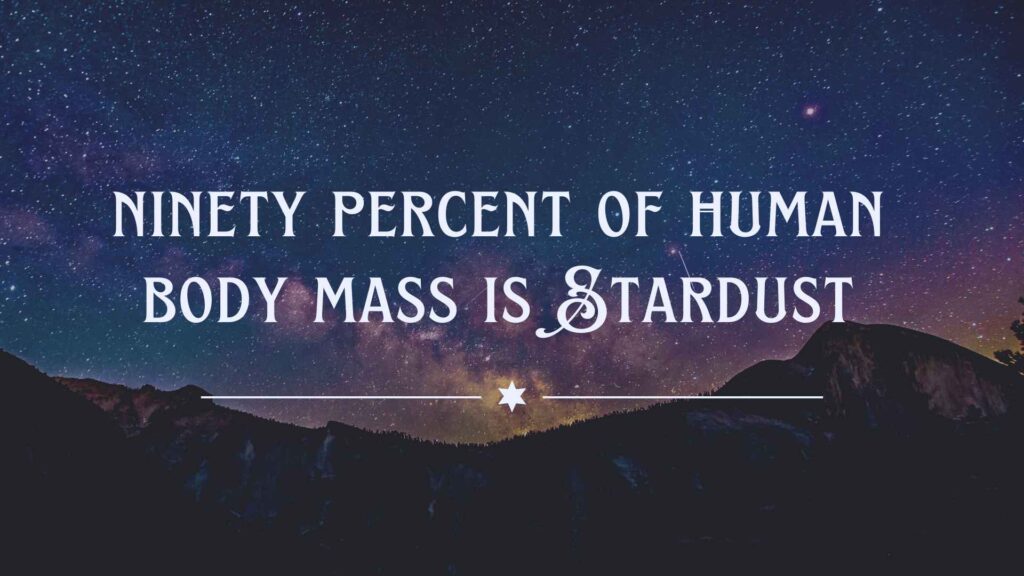Everyone must have heard that we are stardust. It is a fact, but how do we know that we are stardust? Hence, here is the observational evidence of why humans must thank stars to be alive today.

Ninety per cent of the human body is made of stardust. For decades, many astronomers, who surveyed 50,000 stars, have claimed that all the elements in the human body are the same found on the massive stars. All the elements constituting physical bodies have been forged in the bellies of distant, long-extinguished stars. However, how the stardust has reached human bodies and how stars came into existence are the questions asked by many people. The answer lies in the fact that, interestingly, the universe has not always been the same. It has started from a minute dot, and elements, such as oxygen, carbon, and iron, do not exist in the universe’s infancy. In this regard, the Bing Bang Theory is considered the most acceptable theory, which gives a cosmological explanation of the origin of the universe.
The Big Bang Theory explained that around 13.7 billion years ago, our universe emerged from a singularity, a hot dense mass having infinite gravity and energy. Unimaginably, the universe began to expand rapidly as a result of a big bang. As there was a lot of potential in space, the early universe was extremely hot and dense. Gradually, it cooled down with expansion, and subatomic particles were formed and assembled into the two primary elements, Helium and Hydrogen. However, the stars were not present at that time. From Helium, Hydrogen, and dust of space, the stars were born as the giant balls slowly crushing their central regions with the pressure of their gravity. The core of a star, working as a nuclear reactor, started a fusion reaction. Gradually, through chemical reactions, Hydrogen and Helium were built into Carbon, Nitrogen, Oxygen, Iron, Sulfur, and everything from which the human body was composed. Hence, it is how the stars and elements came into existence.
Moving further, as stars spent most of their lives repetitively compressing Hydrogen to form heavier elements, they burnt their fuel, producing light and heat. Thus, when stars ran out of their fuel, the stars collapsed and died. The sufficiently massive stars exploded to form Supernova. Hence, all elements present on the earth were generated and expanded throughout space by the extremely massive dead stars, the Supernovas.
Subsequently, the force of gravity reunited the remains of the exploded stars, the stardust, to form new stars, new planets, and new life. Our sun and earth also coalesced from the residues of expired stars. The spontaneous reactions of the inorganic matter made organic molecules, which, ultimately, found their way into living bodies and became part of them.
Hence, humans have stuff in them as old as the universe because everybody knows that Hydrogen, Oxygen, Carbon, and Nitrogen account for more than ninety-nine per cent of the human body. When Carl Sagan says,” we are made of stellar ash. Our origin and evolution have been tied to distant cosmic events. The exploration of the cosmos is a voyage of self-discovery”, he does not say it metaphorically. In a nutshell, humans are stardust (all the elements except Hydrogen), but they are also the ashes of the Big Bang (Hydrogen).

Articles Might Interest You!













